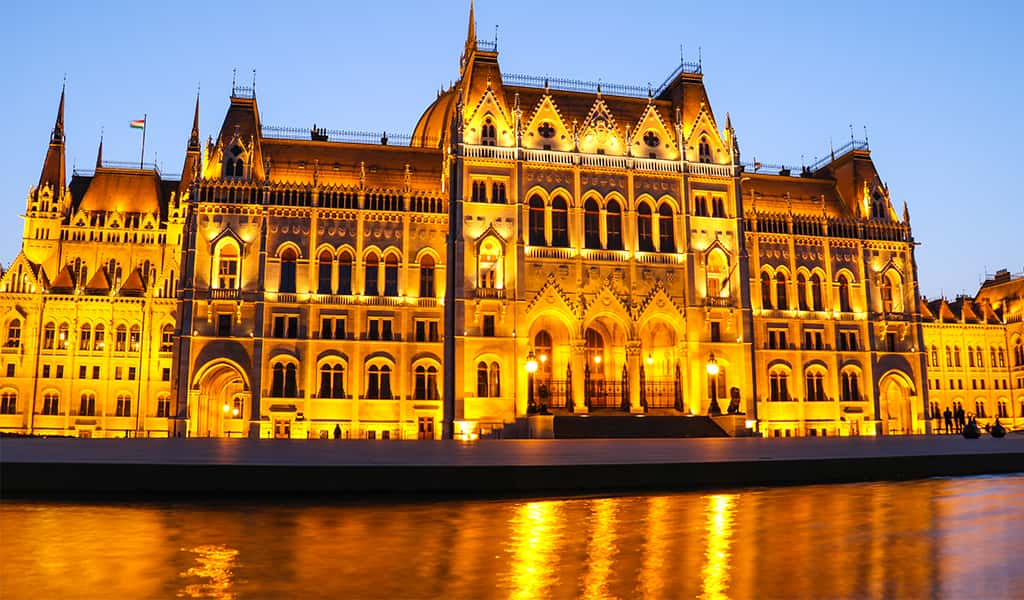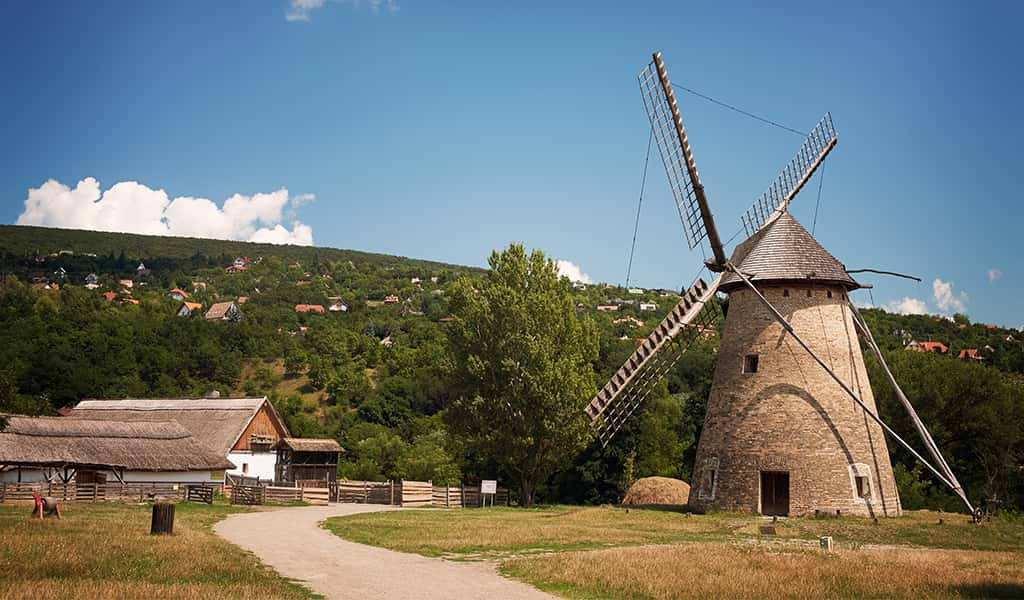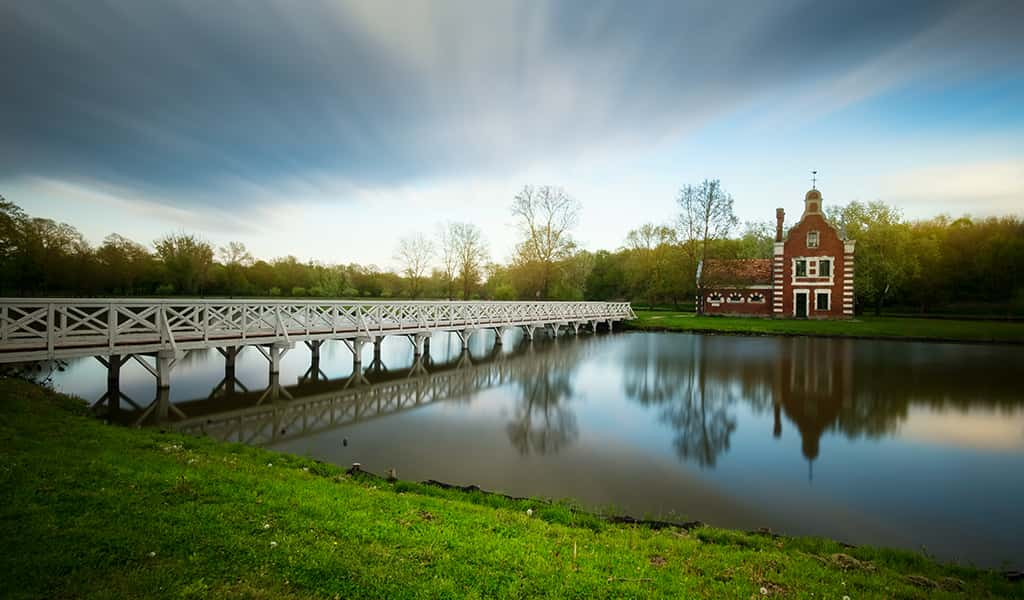Why we can't help but fall in love with Hungarian culture
Travel Hungary
If you’re looking for an affordable European destination packed with rich history, fascinating landmarks and delicious holes in the wall to satisfy your appetite, Hungary is it. While some European destinations are best reserved for a splurge, it’s refreshingly easy to travel Hungary on a budget.
Budapest is popular with many travel bloggers for its relaxing thermal baths, exciting culture, stunning medieval monuments and museums, but there’s also much to explore outside the capital. You’ll also have no trouble getting around the country using public transportation – similar to other European countries, Hungary has a robust transportation network.
We’ve got some tips on where to find inexpensive accommodations, food and things to do during your trip.

Geography, population and more
Hungary is located in central Europe, surrounded by Austria, Croatia, Romania, Serbia, Slovakia and Ukraine. A mostly flat country, it’s dominated by the Great Hungarian Plain east of the Danube – the major river that divides the country almost in half. Just under 10 million people live here, and the country’s largest cities by population are Budapest (the capital), Debrecen, Miskolc, Szeged, Pecs, Nyiregyhaza, Szekesfehervar, and Kecskemet.
Hungarians know their country as Magyarország, “Land of Magyars.”
Currency and budget
Residents of Hungary speak Hungarian and spend forints. Hungary is known for its affordability even to budget-savvy travelers. In fact, it nabbed seventh place on Thrifty Nomads’ 10 best budget travel destinations for 2019.
You’ll be able to eat here inexpensively, too. Thrifty Nomads estimates a simple meal will cost you $5 to $8 USD ($6.72 to $10.76 CDN), while a beer runs $1 to $2 ($1.34 to $2.69 CDN).
Budget Your Trip, which publishes average travel costs for thousands of cities around the world, has budget breakdowns for different time frames and expenses, including accommodation, transportation, tips and more. According to the site, at the cheap end of the spectrum, a couple traveling the country for two weeks could spend 229,275 Ft ($1,069 CDN), while a mid-range trip would cost them 585,132 Ft ($2,729 CDN) and a luxury vacation would run 1,507,375 Ft ($7,030) per couple for two weeks.
Several travel bloggers have written cost breakdowns for traveling Hungary – helpful reading if you’re wondering how much to budget for food, accommodations, attractions, and more. See the Savvy Backpacker’s daily costs to visit Budapest and The Culture Trip’s A budget traveler’s guide to Budapest
Tip: It’s customary to tip waitstaff 10 to 15% of your tab, while you’re safe to hand 10% to both your bartender and taxi driver. Only tip if the service charge isn’t already included, and hand it directly to the person serving you (it’s considered rude to leave a tip on the table).
Take your vacation mid or late year
Hungary continues to rank high on the list of travel recommendations, courtesy of the fantastic weather and interesting activities and events year-round. the U.S. News ranked Budapest as #2 on its Best Places to Visit in Eastern Europe list, and advises visiting between March and May and September through November.

Book a dorm room, hotel or Airbnb
You’re in luck for a place to crash and save – Nomadic Matt says accommodations range from 2,500 Ft ($9 USD or $11.66 CDN) per night for a dorm room at a hostel (where free wi-fi is common, you may get a free breakfast and even be fortunate enough to have kitchen access if you want to cook your own meals), to 6,000 Ft ($22 USD or $27.98 CDN) per night at a budget hotel or 12,000 Ft ($43 USD or $55.96 CDN) per night at a three-star hotel. Outside Budapest your rates will be even cheaper.
You can try booking.com for guesthouses, hotels, apartments, homes and other unique places to stay. There’s also the old standby, Airbnb – plenty of beautiful, centrally located places are available in Budapest and throughout Hungary. Although you may pay a bit more for a bright, comfy atmosphere and more privacy – these ranged anywhere from about $50 to $100 Canadian at time of writing – it may be worth it for the experience.
Passport and safety issues
Because Hungary is a Schengen country, Canadian citizens don’t need a visa to travel here, but watch how long you stay; visa-free travel only applies to stays of up to 90 days in any 180-day period. Stays are cumulative and include visits to any Schengen country (this information can change any time, so always check with Canada’s foreign diplomatic missions and consulates).
If you’re using a regular Canadian passport, it must be valid for at least three months beyond the date you expect to leave the Schengen area. Learn more about passports and visas at Travel GC.
Safety
Take all the usual precautions you do when you travel; always be aware of your surroundings, keep your belongings and baggage close, lock your doors when traveling by car and avoid unlit areas. The Government of Canada cautions that petty crime such as pickpocketing and purse snatching occurs, particularly at markets, on public transportation and in railway stations, shopping centres and tourist areas.
Similar to many international destinations, terrorism is also a threat and targets could include public areas, tourist attractions, restaurants, shopping centres, markets, hotels, airports and other transportation hubs. Always stay aware of your surroundings.
Natural disasters and climate warnings
In addition to human hazards, it’s also important to be aware that natural disasters could lead to a sudden change in plans. Spring flooding can happen between March and May, and occurs annually in the northeast, along the watershed of the upper Tisza River. The Danube River also floods periodically in the spring. Keep these tips in mind if you’re traveling in Hungary during these times:
- be prepared to change, cut short or cancel your travel plans on short notice
- stay informed of the latest regional weather forecasts
- keep emergency contact information for your airline or tour operator
- follow local authorities’ advice and instructions

Hunt bargains online and be flexible with travel times
Flying into Hungary, you’re likely to land in one of these airports, which have direct flights from Canada, according to Skyscanner:
Never Ending Footsteps recommends visiting watching Secret Flying and Skyscanner for deals on flights, adding that because Budapest isn’t one of Europe’s major airports, deals to Hungary are more difficult to find than other popular European destinations. You’ll probably be able to catch a flight for somewhere within Europe for as little as €350 ($524.77 CDN) return, she says, adding you can then find return flights between that destination to Hungary on Skyscanner. Or, just use Skyscanner off the bat, searching for the cheapest days to fly for each month from anywhere in another country.
In short, the more flexible you’re willing to be on the time of year you travel and which airports you arrive and depart from, the more cash you can save on flights.
Public transportation
Europe is well-known for its exceptional public transportation hubs, and Hungary is no different. Once you land in Budapest (most likely at Budapest Ferenc Liszt International Airport), you can catch the 200E or 100E bus from the airport to the city and hump on a metro or tram, notes Nomadic Matt in his Backpacking Budapest Travel Guide (2019).
He says trains and buses are reliable options for getting into and out of Budapest, with direct routes available to many other European cities including Vienna, Prague, Berlin and more.
When you arrive, you’ll want to pick up a Eurail pass (for non-Europeans – Europeans get an Interrail pass) so you can take hassle-free train trips. Check on whether you’ll need to pre-book your route – an easy task (just book 24 hours in advance at a train station), say the Travelling Weasels, who took a circular route of several Hungary cities, including Budapest, Szeged, Pecs, Balaton, and Györ before returning to the capital. Their itinerary is worth reading, as they tracked their activities in detail – where they stopped, the attractions they saw, where they stayed and for how long.
A caveat: Hungary’s train network is centralized in Budapest, so for most cross-country trips you’ll need to transfer there (meaning you could travel a long way in the opposite direction of your destination to connect via the capital), mentions Travelsewhere. On the plus side, David (the self-described travel addict behind Travelsewhere) says he found the trains so good here that he never had to take a bus. And within the cities, Hungary’s extensive network includes metro, trams and buses. The southern city of Szeged is also linked by tram. Hop on a local bus to get to smaller destinations.
Fact: Budapest is home to the oldest electric underground metro on continental Europe. – Travelsewhere

Taste legendary goulash and other mouthwatering dishes
Gulyás (goulash) is one of Hungary’s most popular dishes. While almost each region has its own variety, a basic goulash is a mix of soup and stew, with beef (sometimes veal or pork), carrot, potato, spices and the typical paprika, says The Culture Trip. Find it at Budapest Bisztró, which is known for its legendary Gulyás soup. This modern venue offers a rich choice of traditional dishes, great service and atmosphere.
Fact: Goulash has a long history going back to the ninth century, but it only became a national symbol and a tool for preserving Hungarian identity in the 1800s. – The Culture Trip
If you’re hoping to eat like a local, look for étkezdes – no-frills restaurants that serve home-style dishes at low prices (keep in mind they’re closed on weekends and accept cash only).
Taking this route, you can look forward to discovering places like Budapest’s Kívánság Étkezde, a local eatery that offers classic Hungarian food like the mátrai borzaska (a fried pork cutlet coated in a potato-based breading and topped with sour cream and grated cheese (1,927.24 Ft €6 or $9 CDN)), and Belvárosi Disznótoros, a self-service eatery that offers fully prepared and to-be-prepared traditional Hungarian meat dishes like blood sausage, wild boar stew, chicken cutlets, and more, says Offbeat Budapest, restaurant and city guide featuring places both within and well beyond the main attractions. For more advice on restaurants off the beaten path, see Where to eat with the locals: The 20 best cheap restaurants in Budapest.
Eating out and eating local
Looking to pick up a few delicious finds for a home-cooked meal? Head to the Grand Market Hall in Budapest, said to be the most beautiful and largest of all Budapest market halls. Five minutes from the city centre, the market is open Monday to Saturday and you’ll find everything from fresh local fruits and vegetables to fantastic salamis, fresh fish, Hungarian paprika and Tokaj wines, to clothes, bags and souvenirs. You can even pick up home style meals or Hungarian snacks like Langos at the food stands and eateries on the upper floor.
If you’re hungry for more Hungarian dishes, your choices range from Paprikás csirke (chicken paprikash) to Túrós Csusza (cheese dumplings) and more. See Everything you need to eat and drink in Hungary

What to do
In Budapest, a myriad of activities await – even if you’re a budget-conscious traveler.
Explore Castle Hill
This kilometre-long limestone plateau contains some of Budapest’s most important medieval monuments and museums, and is a UNESCO World Heritage Site. Below it, you’ll find a 28 kilometre-long network of caves created by thermal springs. Learn more about Castle Hill
Soak in thermal baths
What’s a vacation without taking time for some well-deserved R&R? That’s just what you’ll find if you visit a thermal bath. Take the Széchenyi Thermal Baths – some of the most famous in Hungary, if not Europe, according to Two Wandering Soles. For a daily entrance fee of 5,200 Ft ($24.27 CDN) on weekdays and 5,400 Ft ($25.20 CDN) on weekends, you can take a relaxing swim under the sun in cool waters outside, or take a dip in the increasingly hotter pools inside. Jet Setting Fools recommends Lukacs Thermal Baths for a lower budget Budapest bath experience – a two-hour visit is just $10 USD ($13.34 CDN).
Venture outside Budapest
Although a lot of the travel blogs you’ll read on Hungary are all about exploring Budapest, Nomadic Matt takes a broader perspective and makes a compelling case for venturing outside the capital – there’s a lot more to the country than its capital, such as:
- the Necropolis in Pecs,
- the town of Hévíz, where you can soak in the world’s largest thermal lake an inactive, 400-metre high volcano at Gulacs Hill
- the town of Eger, known for its historic castle, stunning Baroque architecture and more
Goats on the Road recommends taking a free, self-guided tour of some of Europe’s most well-preserved historical sites. They also mentioned the Károlyi Gardens, Szabadság Square, Heroes Square, Millenáris Park and more.
You can get a taste of Hungarian history by climbing atop a horse for a riding lesson or going for a hack. The country’s equestrian traditions date back to when Hungarians rode into the Carpathian Basin on horseback and conquered central European territory, notes CNN Travel.

Don’t forget to tell us about your experience! Have you ever traveled to Hungary, or are you planning to book a trip? What are your best tips when it comes to saving for vacations? We’d love to hear what you’ve planned, or any tips we’ve missed. Share your story in the comments and tell us what destinations are on your wish list. Our team love saving for holidays and we hope to inspire our members with exciting suggestions to spend your Caddle money.
